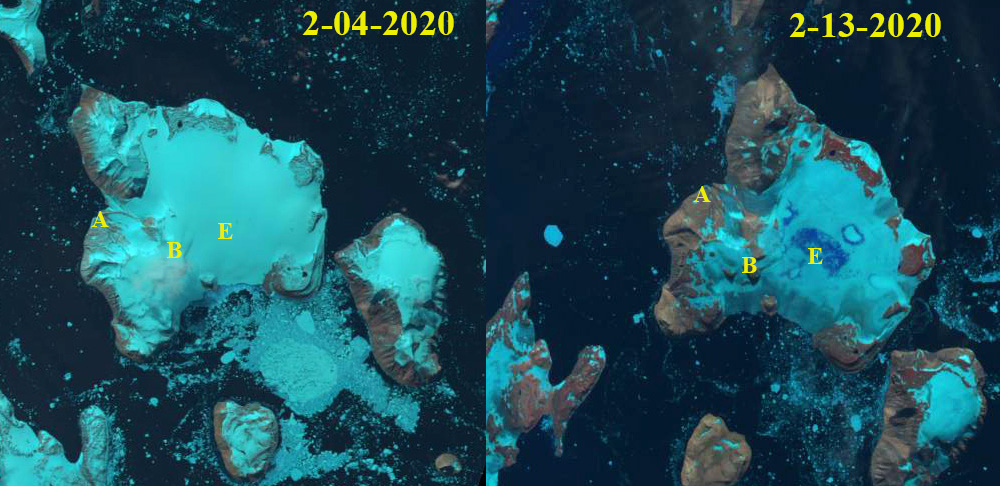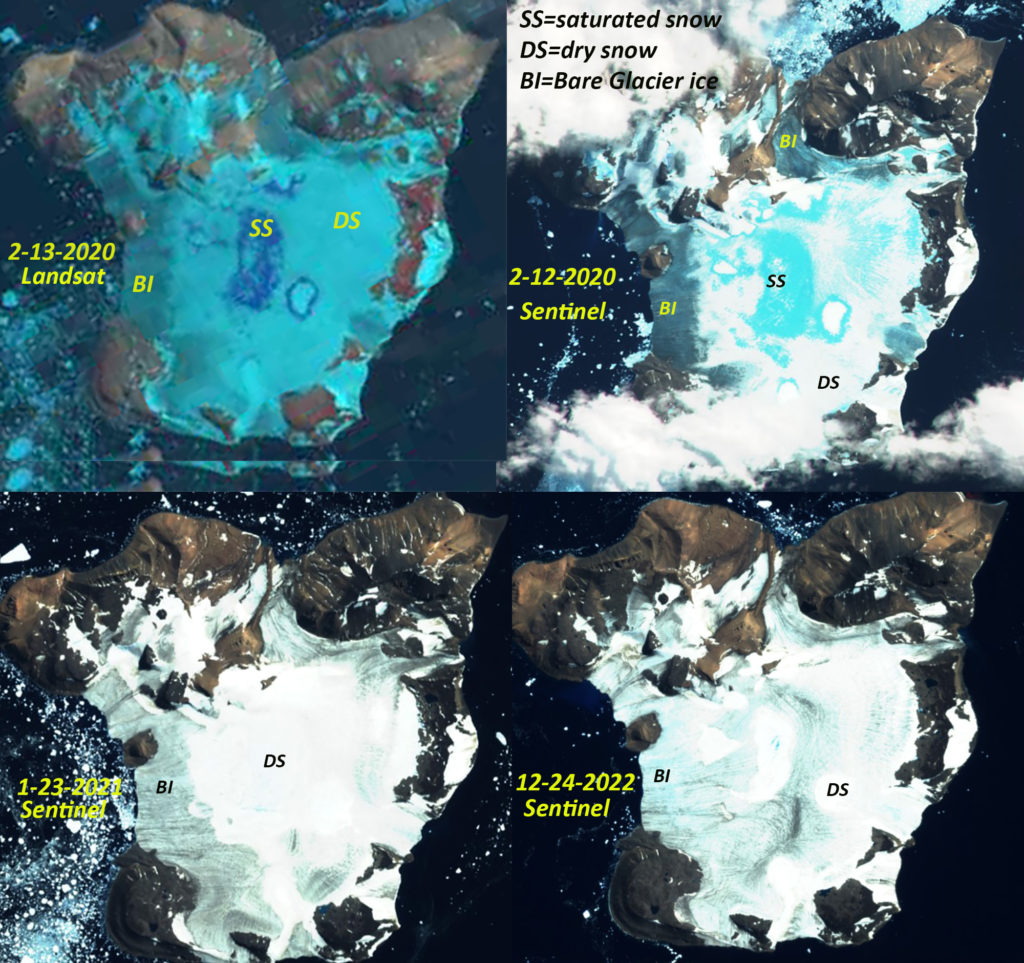March 17, 2023
Eagle Island Ice Cap, Antarctica Loses its Snowcover in 2023
Posted by Mauri Pelto
Eagle Island Ice Cap in Sentinel image from Feb. 19, 2023 illustrating only small patches of snowcover left, 5-10% of ice cap.
On February 19, 2023 Eagle Island Ice Cap, Antarctica has less than 10% snowcover. This is less snowcover than observed even after the period of record warm weather over the Antarctic Peninsula in February 2020. Temperature when the all time Antaractica temperature record was set at Esperenza Base. That year also led to record melt and ponding on the George VI Ice Shelf (Banwell et al, 2021). Here we examine Landsat and Sentinel imagery of the Eagle Island Ice Cap (63.65 S 55.50W), 40 km from Esperanza, to identify surface melt extent and surface melt feature development in 2020, 2022 and 2023. The summit of the ice cap is at 250-300 m and it has an area of 21 km².
In 2020 we observed blue ice areas (BI) and saturated snow areas (SS) rapidly developed from a snow covered ice cap during the heat wave (NASA EO, 2020). The impact of short term melt events like this on an ice cap like this, is visible and significant for annual mass balance, but not large in terms of long term glacier mass balance (volume change) and area. In 2022 a similar patter nof blue ice developed, but no saturated snow. In 2023 the loss of snowcover is nearly completely yielding a more extensive bare ice and firn surface area. This is the result not of a heat wave but of a consistenly warm summer. At Esparanze Base:
- November mean temperature 2.5 C above average
- December mean temperature 0.5 C above average
- January mean temperature 1.5 C above average
- February mean temperature 1 C above average
This yields an mean melt season temperature 1.5 C above average compared to 2020 that had a mean average temperature 0.5 C above average. The most anomalously warm month was November. This led to a mostly snow free ice cap by January 10. The ice cap then experienced a month of mostly snow free conditions with the darker ice melting more rapidly then the snow would. This in particular will lead to marginal retreat of the ie cap along bare rock margins.
Eagle Island Ice Cap in Sentinel image from Jan. 10, 2023 illustrating only 15-20% snowcover left.
Eagle Island Ice Cap, Antarctica in Landsat images from Feb. 4, 2020 and Feb. 13, 2020. Point E indicates an are area of snow/firn that is saturated with meltwater. Point A and B indicate locations where the amount of bare rock/ground and hence albedo have changed dramatically.
Landsat and Sentienl images at peak of melt season in 2020 and 2022.






 Dean of Academic Affairs at Nichols College and Professor of Environmental Science at Nichols College in Massachusetts since 1989. Glaciologist directing the North Cascade Glacier Climate Project since 1984. This project monitors the mass balance and behavior of more glaciers than any other in North America.
Dean of Academic Affairs at Nichols College and Professor of Environmental Science at Nichols College in Massachusetts since 1989. Glaciologist directing the North Cascade Glacier Climate Project since 1984. This project monitors the mass balance and behavior of more glaciers than any other in North America.